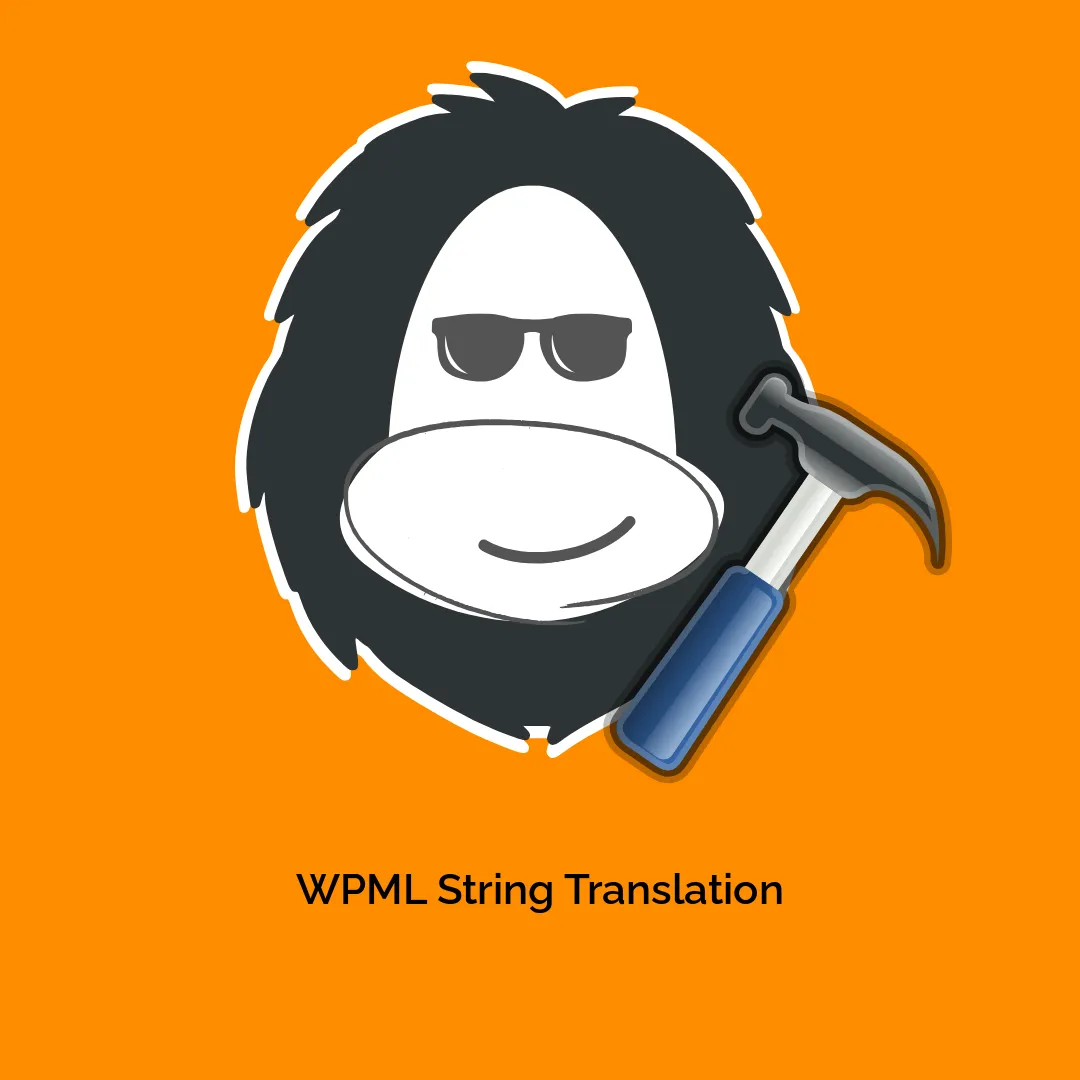The Essential Guide to WPML String Translation
WPML String Translation is a powerful tool designed to facilitate the translation of text outside the standard posts and pages of your WordPress site. This includes crucial components such as the site’s tagline, administration screen texts, and widget titles. Understanding how to effectively utilize WPML String Translation can elevate your website’s multilingual capabilities and improve the user experience for visitors from different linguistic backgrounds.
Understanding Strings in WordPress
In WordPress, the structure of front-end pages can be categorized into two main components: content and everything else—commonly referred to as the site’s structure. Within this context, “strings” represent various snippets of text embedded throughout your site that are not categorized as specific content like posts or pages. This encompasses a wide range of text elements, including menu labels, error messages, instructions on forms, and any other textual elements inherent to WordPress itself or added through themes and plugins.
For example, a string might be the label of a button users click to submit a contact form, the notification message that appears when a user completes a purchase, or even the phrases displayed in widget areas. These pieces of text, while critical to the functionality and usability of your site, often require careful translation to maintain consistency across multiple languages.
What You Need for String Translation
To translate strings effectively, you need to have the WPML (WordPress Multilingual Plugin). The String Translation addon is included with both the WPML Multilingual CMS and WPML Multilingual Agency accounts. To start utilizing this feature, you can either install it as part of the standard WPML installation process or download it manually from your account downloads page.
Once installed, if you are a WordPress admin, you will see the WPML → String Translation option in your admin menu, confirming that the addon is functioning correctly.
Translating Strings Using WPML
WPML is designed to streamline the translation process for strings. By default, it automatically detects untranslated strings on your site and marks them for translation as you browse through the translated content while logged in as an admin. This is an extremely useful feature, as it allows for real-time identification of text that needs translation.
Moreover, WPML can be configured to enable string detection for all visitors, irrespective of their login status. This functionality ensures that no matter who visits your site, any untranslated strings can be flagged for action.
To begin translating strings, navigate to WPML → Translation Management and scroll down to the Other texts (Strings) section. There, you can utilize the filter options to find specific strings that need translation and send them to the translation queue. This simple yet effective process helps in organizing your translation workflow and ensures that important text elements are translated without delay.
For users who are visual learners, there are various tutorials available, such as instructional videos, which provide a quick overview of how to manage string translations on your site. These resources can be incredibly beneficial, especially if you are unfamiliar with the plugin’s interface or functionality.
However, if you find yourself unable to locate certain strings that you know need translation, it’s essential to check the top of the Other texts (Strings) section to confirm that the auto-detection feature for strings is enabled. To ensure the automatic detection works effectively, it may also be useful to visit the front-end page where the strings in question appear in any language other than English. This can often spark the detection process as WPML scans for untranslated elements.
Limitations in String Detection
While WPML String Translation is a robust tool for managing translations, it isn’t without its limitations. There are specific string types that WPML might not automatically identify. These include strings utilized by themes and plugins for internal settings, user profile-related texts, and any strings that contain placeholders.
For instance, if a theme utilizes a string for showing the current user’s name within a welcome message, WPML may struggle to recognize this string since it varies based on user interaction. Similarly, plugin settings often have strings that could be overlooked if they’re integrated with custom functions or scripts.
It’s important to take these limitations into account when planning your translation strategy. If you encounter strings that aren’t detected or marked for translation by WPML, you might need to manually enter these translations into the system. This could involve direct edits to theme or plugin files (which should be approached with caution), or utilizing alternative methods to ensure your text is correctly conveyed across languages.
Best Practices for WPML String Translation
To get the most out of WPML String Translation, following best practices can help streamline your workflow and enhance the overall effectiveness of your website’s multilingual setup.
1. Consistent Updates to String Translation
Keep an eye on updates provided by your themes and plugins since new strings may appear with these updates. Regularly revisiting the String Translation section in WPML ensures you are up-to-date with any new text that requires attention.
2. Use Clear and Concise Translations
Translation quality is crucial, so aim for clarity. This means not just translating the words literally, but ensuring that the translated content resonates with the target audience. For instance, idiomatic expressions may need to be rephrased to speak to the cultural contexts of your audience.
3. Organize Your Translations
If you have a large number of strings, categorizing them can be incredibly helpful. Group strings by type or importance, especially those for critical actions like purchases, sign-ups, or error messages, so you can prioritize their translations accordingly.
4. Leverage Workflow Tools
If you’re part of a larger team, consider implementing workflow tools that allow multiple translators to work collaboratively on string translations. Assign specific string categories to different members based on their language proficiency or subject matter expertise.
5. Test Your Translated Strings
After translating strings, it’s always best to revisit the front end of your website. Testing the translations in context allows you to see if they fit seamlessly within the design and perform as expected. This is particularly important for buttons, forms, and notices, where miscommunication can lead to user frustration.
6. Monitor User Feedback
Once your translations are live, gather feedback from users who are familiar with the target language. They might provide insights that lead to improvements or corrections, ensuring that your translations are high-quality and user-friendly.
7. Regular Training
If you’re maintaining a team of translators, consider regular training sessions to keep their skills sharp and ensure everyone understands best practices for using WPML String Translation efficiently.
Conclusion
WPML String Translation presents a unique opportunity to enhance your multilingual WordPress site by translating vital text elements beyond traditional content. With features that facilitate the detection and managing of these strings, coupled with thoughtful practices, you can ensure your site speaks to a diverse audience effectively. By paying attention to both the limitations and the best practices outlined here, you would fortify your site’s user experience and expand its reach seamlessly across different languages. This translates not just to a wider audience but potentially to greater engagement and conversion rates on your website. Invest time and effort into mastering WPML String Translation, and you’ll be better positioned to cater to a global market in today’s interconnected digital landscape.
WPML String Translation: Download for Free on OrangoGPL
You see, downloading WPML String Translation Plugins for free on OrangoGPL is perfectly feasible and legal.
Actually, even downloading a cracked WPML String Translation is law-abiding, because the license it is distributed under is the General Public License, and this license permits all kinds of code modifications.
Hence, be calm: If you wanted to buy WPML String Translation cheaply or, directly, to download WPML String Translation Plugins nulled and, so, get it one hundred percent free, on OrangoGPL, you can do that legally.
Download WPML String Translation GPL: A great solution for new entrepreneurs
We don’t care what you call it: WPML String Translation Plugins offers, download WPML String Translation Plugins GPL, download WPML String Translation without license or download WPML String Translation Plugins cracked.
It is something totally law-abiding and something more than necessary for every entrepreneur at the start of their journey.





Reviews
There are no reviews yet.